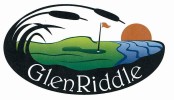Particular care shall be devoted to preservation of trees and the existing vegetation that are found throughout the Property.
Furthermore, Owners must also ensure that Worcester County development requirements are maintained.
It is recommended, and in some instances may be required by the Architectural Control Committee, that tree surveys be undertaken prior to site planning.
The value of trees cannot be overemphasized.
Participating Builders and Owners must facilitate tree preservation efforts through the use of proven protection measures.
These measures, which must be submitted and approved by the Architectural Control Committee after review of plans clearly identifying limits of clearing, shall be in place prior to the beginning of construction and maintained intact until completion.
In addition, Participating Builders must inform Owners, in writing, of the requirement for continued preservation of all saved existing vegetation and trees.
Unless otherwise approved by the Architectural Control Committee, removal of or damage to existing trees and existing vegetation/understory (any vegetation under 3’0” high) as shown on the approved subdivision plan or existing on lots necessitates replacement of said trees and vegetation with like-kind plant material. [Native species such as laurel, sweet pepper, dogwood, magnolia, bayberry and holly should be protected. “Invasive species” such as greenbrier, vines
and phragmite may be removed.]
Replacement trees can be transplanted or new material planted to reestablish the character prior to disturbance.
It is expressly understood that Participating Builders and Owners are required to replace all damaged or removed trees with minimum 4” caliper shade or canopy trees [may be substituted with multiple smaller trees that reach the equivalent caliper (i.e., 4-1” trees for each 4” tree required)], although larger trees may be required to reestablish the character of the area.
Plans should maximize the preservation of the natural environment through the retention and maintenance of as many existing trees, existing vegetation and understory vegetation as possible.
The desirability of preserving trees by reason of size, age or some other outstanding quality, such as uniqueness of species, rarity or status as a landmark or specimen tree throughout the Community is important.
Grubbing or clearing of understory in natural areas is not permitted, except to remove poisonous plants or to distinguish an edge to the area.
Site clearing for development should be kept to the minimum area required for construction.



Post your comment on this topic.